Skip to main content
Frances Hammell Gearhart
1869–1958
BirthplaceSagetown (now Gladstone), Illinois, United States of America
Death placePasadena, California, United States of America
BiographyA master of woodcut technique, Frances Hammell Gearhart was a central figure in the printmaking scene in southern California in the early decades of the twentieth century. Born in Sagetown (now Gladstone), Illinois, Gearhart grew up in Pasadena, California. She shared her artistic interests with her two younger sisters, May and Edna; they became art teachers in the Los Angeles public schools, while Frances taught history. Between 1905 and 1910, she spent several summers in the East studying with painters Henry Rankin Poore (1858—1940) and Charles Woodbury (1864—1940); she also may have come under the influence of Arthur Wesley Dow, an important teacher of design with whom her sisters studied.
Gearhart had her first exhibition, consisting of landscapes in watercolors, in 1911 at a Los Angeles gallery. Other exhibitions followed, and gradually she expanded her range to include figure studies. In the late 1910s, she took up the technique of color woodblock printing. Possibly introduced to the medium by American painter and illustrator Pedro J. Lemos (1882—1954), she was largely self-taught in its techniques. Gearhart was strongly influenced by the design aesthetic of the Japanese woodcut masters whose prints had been treasured by westerners since the mid-nineteenth century, and by the simplified, nature-inspired style of the so-called Arts and Crafts movement, then at its height in California. She soon joined the recently founded Print Makers of Los Angeles, an artists' group later renamed the Print Makers Society of California. By 1920 she was so highly regarded in her chosen medium that the society commissioned her to make the first of its annual members' premium prints. Gearhart's skill developed further when she learned Japanese woodcut techniques, probably throughFrank Morley Fletcher, who settled in southern California in 1923.
In the early 1920s, Gearhart was able to resign from teaching to devote herself more fully to her art. She ran a commercial print gallery from the studio she shared with May, and the two sisters exhibited their work together. Their joint show at the Los Angeles Museum of History, Science, and Art (now the Los Angeles County Museum of Art) was that institution's first display of color prints. Through her activities as an officer for the Print Makers Society of California, Gearhart was instrumental in introducing Californians to the work of an international cadre of printmakers, especially woodcut artists. Outside California, she showed her work at such venues as the Brooklyn Museum and the American Institute of Graphic Arts in New York, and the Kansas-based Prairie Print Makers. In 1931, the American Federation of Arts organized a circulating exhibition of Gearhart's California landscape prints, and two years later New York's Grand Central Art Galleries mounted a solo exhibition. Failing eyesight forced Gearhart to give up printmaking in the 1940s, by which time the color woodcut had secured its place in American art.
Gearhart had her first exhibition, consisting of landscapes in watercolors, in 1911 at a Los Angeles gallery. Other exhibitions followed, and gradually she expanded her range to include figure studies. In the late 1910s, she took up the technique of color woodblock printing. Possibly introduced to the medium by American painter and illustrator Pedro J. Lemos (1882—1954), she was largely self-taught in its techniques. Gearhart was strongly influenced by the design aesthetic of the Japanese woodcut masters whose prints had been treasured by westerners since the mid-nineteenth century, and by the simplified, nature-inspired style of the so-called Arts and Crafts movement, then at its height in California. She soon joined the recently founded Print Makers of Los Angeles, an artists' group later renamed the Print Makers Society of California. By 1920 she was so highly regarded in her chosen medium that the society commissioned her to make the first of its annual members' premium prints. Gearhart's skill developed further when she learned Japanese woodcut techniques, probably through
In the early 1920s, Gearhart was able to resign from teaching to devote herself more fully to her art. She ran a commercial print gallery from the studio she shared with May, and the two sisters exhibited their work together. Their joint show at the Los Angeles Museum of History, Science, and Art (now the Los Angeles County Museum of Art) was that institution's first display of color prints. Through her activities as an officer for the Print Makers Society of California, Gearhart was instrumental in introducing Californians to the work of an international cadre of printmakers, especially woodcut artists. Outside California, she showed her work at such venues as the Brooklyn Museum and the American Institute of Graphic Arts in New York, and the Kansas-based Prairie Print Makers. In 1931, the American Federation of Arts organized a circulating exhibition of Gearhart's California landscape prints, and two years later New York's Grand Central Art Galleries mounted a solo exhibition. Failing eyesight forced Gearhart to give up printmaking in the 1940s, by which time the color woodcut had secured its place in American art.

